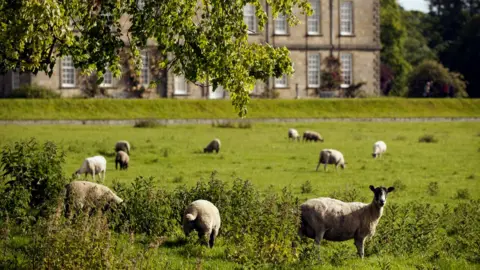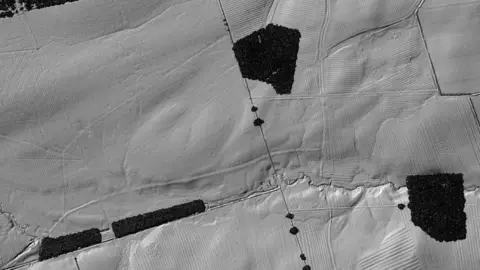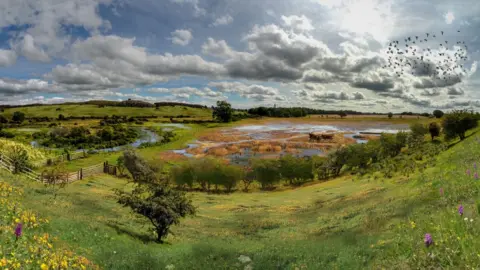National Trust's laser mapping reveals lost Wallington woodlands
 National Trust/John Millar
National Trust/John MillarAerial laser mapping of the National Trust's largest estate is helping to plant trees where historic woodland once stood.
The project has used technology known as Lidar on 57sq km (22sq miles) over Northumberland's Wallington Estate.
It produced information about the lay of the land, as part of the charity's efforts to plant 75,000 trees over the next few months.
The survey also revealed 120 features dating back to 2000BC.
The tree planting is intended to help reverse declines in wildlife, restore natural habitats and enable the storage of more carbon, the trust said.
Among the archaeological features revealed by Lidar (light detection and ranging) were early "ridge and furrow" farming systems, Roman sites and a 17th-Century recreational landscape with a large water feature.
 National Trust
National TrustNational Trust archaeological consultant Mark Newman said: "The Lidar findings have shone a light on much more than we could have imagined so that we can better understand the history of the landscape to help inform plans for its future.
"We can now plant with confidence, selecting areas for planting that avoid damaging any significant archaeological remains.
"But, and this is one of the things we are really excited about, we can now actually recreate areas of lost historic planting which we didn't previously know about."
 Peter Farmer/FDA Design
Peter Farmer/FDA DesignThe scheme at Wallington is the biggest woodland creation project so far as part of plans by the trust to establish 20 million trees by 2030 to help nature and tackle the climate crisis.
It is estimated to cost £800,000 and is being paid for with money from the government's green recovery challenge fund.

Follow BBC North East & Cumbria on Twitter, Facebook and Instagram. Send your story ideas to [email protected].
